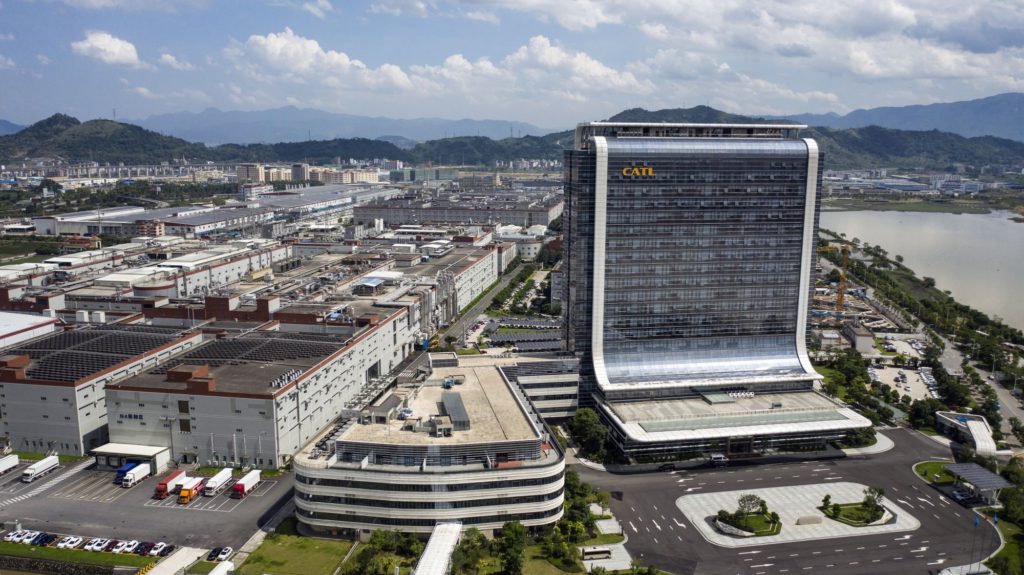(Bloomberg) — Before the coronavirus struck, investing in luxury stocks and Chinese internet giants like Alibaba Group Holding Ltd. and Tencent Holdings Ltd. was a surefire way of tapping the world’s largest consumer base.
Then midway through the pandemic, Beijing began a regulatory crackdown that culminated in an Aug. 17 speech by President Xi Jinping that changed everything.
“Common prosperity” — a slogan Xi had used with increasing frequency this year — took on the weight of a national priority. Chinese companies that exacerbated the wealth divide were in trouble. Those that narrowed it were in demand.
But as investors are learning, Xi’s vision goes further than just reducing inequality. His speech also made clear that efforts to foster “common prosperity” would come amid a drive for “high-level development” of China’s economy.
That’s opened the door to a host of sectors where stock portfolios can outperform by aligning with government goals. The caveat — which holders of internet stocks discovered the hard way — is that companies will be punished if they amass too much power or disrupt social harmony.
“The two words, common and prosperity, should be viewed individually in order to grasp the full breadth of the goals.” said Kinger Lau, a strategist at Goldman Sachs Group Inc. “While income redistribution is important, sustainable growth and prosperity through upgraded technology is equally if not more important — this is needed in order to have something to redistribute.”
After a year that many investors would prefer to forget — Hong Kong’s Hang Seng Index is down more than 10% and its mainland counterpart is 3% in the red — here is a guide to where analysts see opportunity in 2022 in Xi’s China:
Consumption Stocks
Rather than luxury products and flashy brands, staples and durable goods are expected to find favor. Those with high potential in rural markets may do especially well as policy makers look to address China’s rural-urban divide.
This means listed food and beverage companies that cater to budget-conscious consumers. To the extent that lower-income earners see improvement in their lot, analysts project that the added purchasing power will go into products ranging from higher-end dairy products to household appliances and affordable cars.
Anything that flaunts excessive wealth, like luxury vehicles, jewelry and top-shelf liquor, may struggle. The longer-term potential for a broadening in the scope of consumption tax to better match social goals could also add to headwinds for luxury stocks.
Companies that play to national pride in China’s rise may have an edge over foreign rivals. Examples include local sportswear makers like Li Ning Co. and Anta Sports Products Ltd. versus Nike Inc., restaurant chains such as Haidilao International Holding Ltd. relative to McDonald’s Corp., and homegrown cosmetics companies SYoung Group Co. and Yatsen Holding Ltd. over L’Oreal SA.
Industrials and Technology
Semiconductors are one aspect of high-level manufacturing that’s received a lot of attention. Beyond this, analysts see opportunity for businesses in robotics, telecommunication networks, and big data, which should all benefit from state-led investment.
They also suggest that “new infrastructure” spanning everything from urban rail systems to artificial intelligence has the same kind of investment potential that roads and bridges did in the past.
The outlook for China’s big internet names is uncertain, although most observers agree that their years of stellar share-price gains are behind them. While there is huge value in the troves of data these companies have collected, the power it brings is seen as an unacceptable challenge to the government’s own authority.
On top of this, operators like delivery platform Meituan have run foul of labor laws and efforts to lift the pay of gig-economy workers.
Stocks to watch include GigaDevice Semiconductor Beijing Inc., Hangzhou Lion Electronics Co., Iflytek Co. and Nari Technology Co.
Healthcare
“Common prosperity” dovetails with a drive to make medical treatment and pharmaceuticals more affordable, while also moving China up the ladder in biotechnology.
For investors, this is translating to higher valuations to pharma firms with cutting-edge innovation and lower valuations for generic drug makers as the government pushes to keep prices down for basic medicines.
Companies in the traditional Chinese medicine space are expected to punch above their weight because the industry is a source of national pride and counts Xi among its supporters.
Stocks to watch include Beijing Tongrentang Co., Walvax Biotechnology Co., Wuxi Apptec Co. and Lepu Medical Technology Beijing Co.
Renewable Energy
Energy security is considered essential for China’s economic growth while electric vehicles and renewable power sources like wind and solar match Xi’s desire for high-level development and a cleaner environment.
Goldman Sachs analysts suggest that the use of the word “ecology” in multiple official reports on “common prosperity” provides a link that investors should heed. They see a favorable earnings growth trajectory for renewables and electric vehicle stocks next year and into the future as China pours capital into efforts to curb carbon emissions.
Stocks to watch include Contemporary Amperex Technology Co., Shanghai Putailai New Energy Technology Co., BYD Co. and Sungrow Power Supply Co.
More stories like this are available on bloomberg.com
©2021 Bloomberg L.P.











